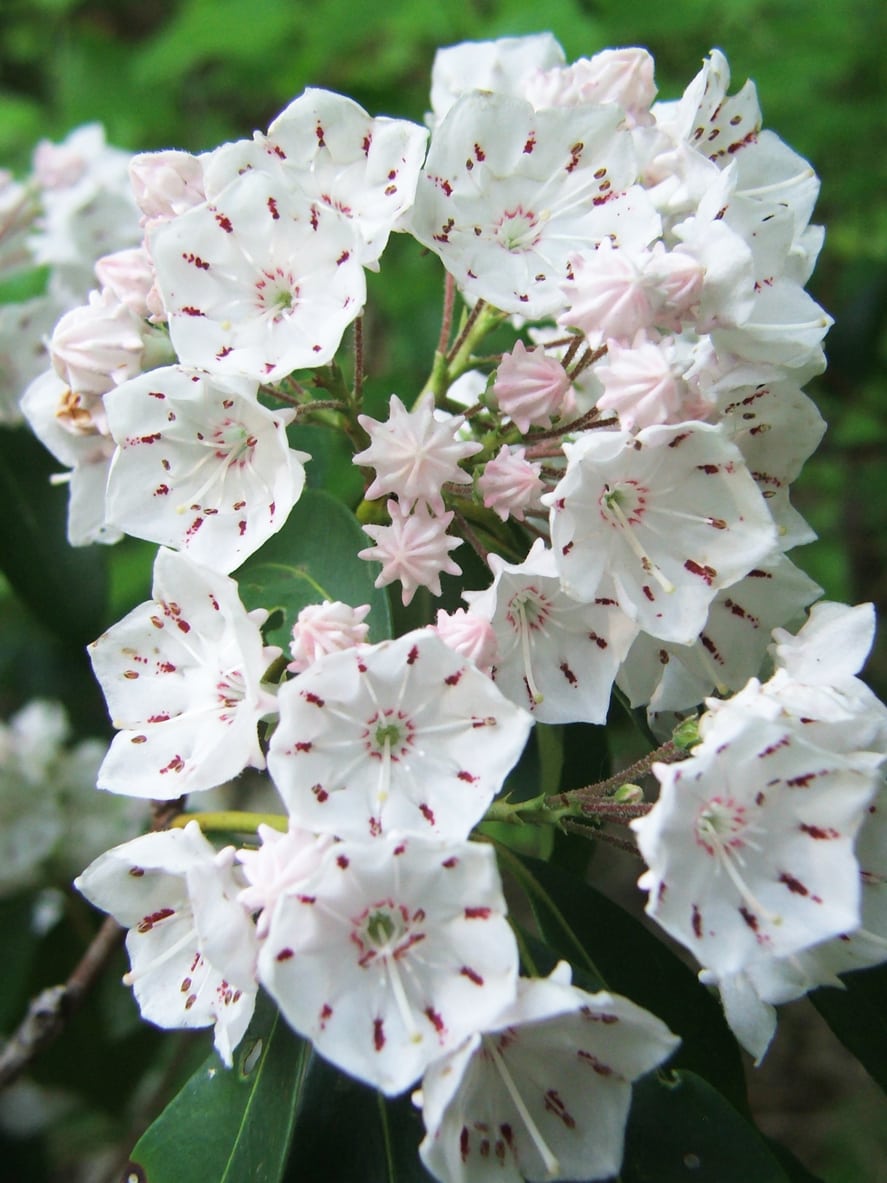Cuttings From Mountain Laurel Shrubs: How To Root Mountain Laurel Cuttings


Mountain laurels are easy-maintenance plants native to this country. They grow happily in the wild, reproducing from seeds. Seeds won’t reliably reproduce hybrid cultivars. The only way to be sure of clones is mountain laurel cutting propagation. Growing cuttings from mountain laurel is possible, but it’s not always easy.
Mountain Laurel Cutting Propagation
When you want to grow mountain laurel from cuttings, the first step is to take the cuttings at the right time of year. Experts agree that cuttings from mountain laurel must be taken from the current year’s growth. When exactly should you start your mountain laurel cutting propagation? You can take cuttings as soon as the growth ripens. Depending on which part of the world you call home, this could be early in the calendar year, or in the period August to December. To successfully root mountain laurel cuttings, you’ll do well to take them from healthy branch tips. Make sure they haven’t been damaged by insects or disease. Each cutting should be 6 to 8 inches (15 to 20 cm.) long.
Rooting Mountain Laurel from Cuttings
The next step is to prepare the cuttings. Slice the base of each on both sides of the stem, then dip the bases in rooting hormone. Plant each in a small container in an equal mix of perlite, coarse sand and peat moss. In order to root mountain laurel cuttings, you’ll need to keep them moist. Add water to the potting material when you plant them and mist the leaves. It helps hold the moisture in the cuttings from mountain laurel if you cover them with clear plastic bags, removing them only when you water and mist every day.
Patience Pays
When you are trying to grow mountain laurel from cuttings, the next step is patience. Keep the cuttings in a warm spot out of direct sunlight and keep the soil moist. Then prepare yourself for a wait. It may take four to six months before the cuttings root. You’ll be able to tell if you gently lift up on the cuttings and feel resistance. These are the roots that are spreading in the soil. Don’t pull too hard because you don’t want to remove the plant yet, but you can stop sheltering it with a plastic bag. Give it another month, then transplant the cuttings.
Sign up for the Gardening Know How newsletter today and receive a free copy of our e-book "How to Grow Delicious Tomatoes".

Teo Spengler is a master gardener and a docent at the San Francisco Botanical Garden, where she hosts public tours. She has studied horticulture and written about nature, trees, plants, and gardening for more than two decades, following a career as an attorney and legal writer. Her extended family includes some 30 houseplants and hundreds of outdoor plants, including 250 trees, which are her main passion. Spengler currently splits her life between San Francisco and the French Basque Country, though she was raised in Alaska, giving her experience of gardening in a range of climates.